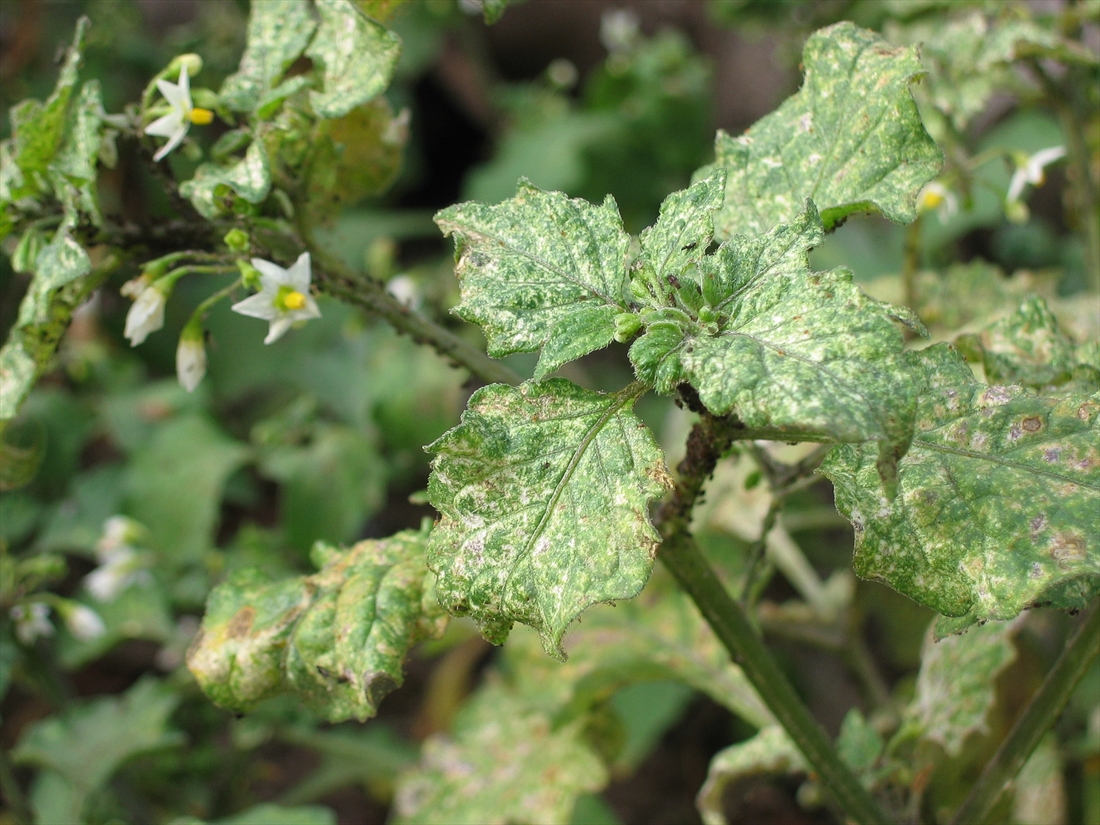As a tomato gardener few things are more frustrating than finding your precious tomato plants infested with tiny red mites. These nearly invisible pests known as red spider mites, can quickly get out of control and devastate your tomato crop.
In this comprehensive guide, we’ll cover everything you need to know about identifying and getting rid of red mites on tomato plants.
What Are Red Mites on Tomato Plants?
Red spider mites, scientifically known as Tetranychus urticae are a common tomato pest found worldwide. They are very tiny arachnids measuring only 0.4-0.6 mm long when fully grown.
These mites have oval-shaped bodies and eight legs. They range in color from yellowish-green to reddish-orange. Their front legs are longer than the other pairs, giving them a crab-like appearance under magnification.
Red spider mites thrive in hot, dry conditions. They like to feed on the undersides of tomato leaves, where they pierce the cells with their mouthparts and suck out the contents. This damages the leaves, causing yellow stippling, browning, wilting, and even leaf loss.
An infestation often starts on older leaves at the bottom of the plant. If left uncontrolled, the mites will spread upward and can eventually kill the entire plant.
Signs of Red Mites on Tomato Plants
Detecting red spider mites early is crucial to saving your tomato crop. Here are the signs to look out for:
- Tiny yellow, white, or brown spots on leaves
- Leaf stippling and bronzing
- Fine webbing on undersides of leaves
- Leaves turning yellow or brown
- Leaves drying out and dropping off
- Stunted plant growth
Mites tend to congregate on the undersides of leaves, so be sure to check there. You may need a magnifying glass to see the mites themselves. Their populations can explode quickly, so don’t delay treatment.
How to Get Rid of Red Mites on Tomato Plants
If you catch an infestation early, it can often be controlled with simple measures:
Knock them off with a strong stream of water. Give the plants a good shower, spraying the undersides of leaves forcefully. This physically removes many mites. Follow up with other treatments.
Apply insecticidal soap. Insecticidal soaps containing potassium salts of fatty acids can help control mite populations. Spray all leaf surfaces thoroughly and repeat every 5-7 days until mites are gone.
Use horticultural oil. These oils smother mites on contact while being safe for plants. For best results, spray early in the morning and when temperatures are below 90°F.
Release predatory mites. Beneficial mites like Phytoseiulus persimilis feed on spider mites. They can be purchased and released onto infested plants.
For severe infestations, miticides specifically targeted at mites may be necessary. Always follow label directions carefully when using pesticides. Rotating pesticide modes of action helps prevent resistance.
Preventing Red Mites on Tomato Plants
Prevention is the best medicine when it comes to red spider mites. Here are some tips:
-
Select mite-resistant tomato varieties when possible.
-
Water plants at the soil line rather than overhead.
-
Keep plants healthy and avoid stressing them.
-
Control weeds which can harbor mites.
-
Allow space between plants for airflow.
-
Clean up and destroy debris after harvest.
-
Use row covers early in season.
-
Release beneficial predatory mites.
Staying vigilant and inspecting plants frequently allows you to nip any new infestations in the bud. Taking a proactive approach is key to keeping these tiny pests from getting out of hand.
Frequently Asked Questions
How do red mites spread to tomato plants?
Red spider mites spread via wind, garden tools, animal fur, and more. They are carried long distances this way. Their populations also explode quickly during hot, dry conditions.
Do red mites harm tomato fruits?
Yes, mite feeding and stippling damage on leaves negatively impacts photosynthesis. This leads to reduced fruit size and quality. Mites may also spread to fruits directly, causing scarring.
Should infested tomato plants be removed?
Severely infested plants should be pulled up and destroyed. They likely won’t recover and will just act as a breeding ground for mites to spread further. Healthy plants can recover with prompt treatment.
What predators eat red spider mites?
Several beneficial insects prey on spider mites, including ladybugs, lacewings, minute pirate bugs, predatory mites, and six-spotted thrips. Avoid pesticides that would kill these helpful species.
Can neem oil kill red mites on tomatoes?
Yes, neem oil is effective against red spider mites. It coats their bodies and asphyxiates them. Apply neem according to label directions for mite control and be sure to cover all leaf surfaces.
Controlling red spider mites organically on tomato plants takes persistence and attention to detail. But with vigilance and early intervention, you can enjoy a healthy harvest free of damage. Always take an integrated pest management (IPM) approach that minimizes risks to people, wildlife, and the environment.

Signs that you have spider mites on your tomato plants
Spider mites can be very difficult to spot and diagnose, but if you see any of the following signs on your tomato plants, its time to take action:
1) Webbing on the leaves
5) A bad odor.
Spider mites will create a silken covering over branches and leaves to protect themselves from predators and parasites. Another indication of spider mites is their erratic movement and their preference for high-traffic areas.
How to get rid of spider mites on tomato plants
Spider mites can be a big problem on tomato plants, causing them to stunt and yield less fruit. There are a few ways to get rid of spider mites from your plants. Some of them are fellows.
